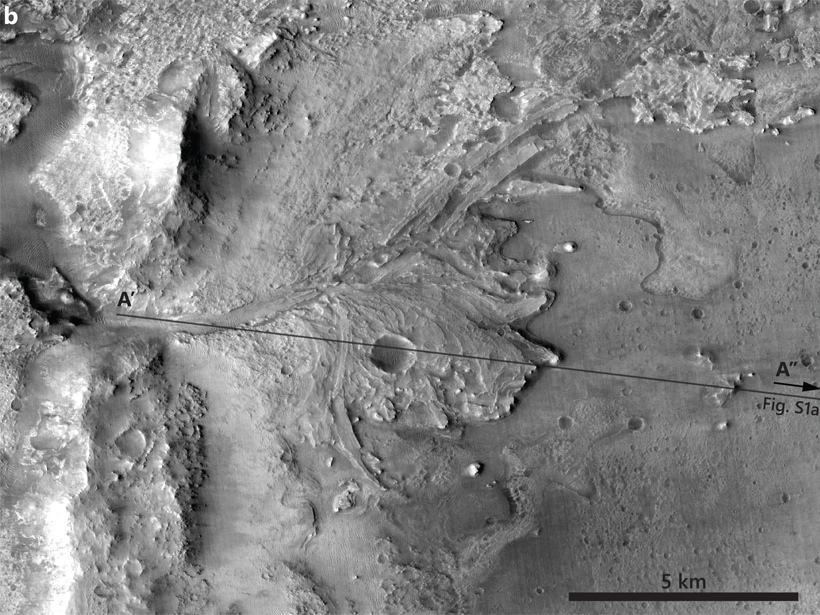Source: AGU Advances
An ancient river delta is the target of the next Mars rover, chosen because it will provide insight into early Martian climate and, perhaps, yield organic material. Lapôtre & Ielpi [2020] have adapted a model calibrated from meandering rivers on Earth to determine how long it took this Martian delta to form. They conclude that, at minimum, only a few decades were required. This timescale is consistent with the idea that ancient Mars was mostly cold and dry, with brief intervals of more clement conditions and surface water flow arising from meteorite impacts or volcanic emissions. They also argue that the relatively rapid sediment emplacement makes burial and preservation of organic materials quite likely. With luck, the rover — Perseverance — will test these predictions in the near future.
Citation: Lapôtre, M. & Ielpi, A. [2020]. The pace of fluvial meanders on Mars and implications for the western delta deposits of Jezero crater. AGU Advances, 1, e2019AV000141. https://doi.org/10.1029/2019AV000141
—Francis Nimmo, Editor, AGU Advances
Text © 2020. The authors. CC BY-NC-ND 3.0
Except where otherwise noted, images are subject to copyright. Any reuse without express permission from the copyright owner is prohibited.

